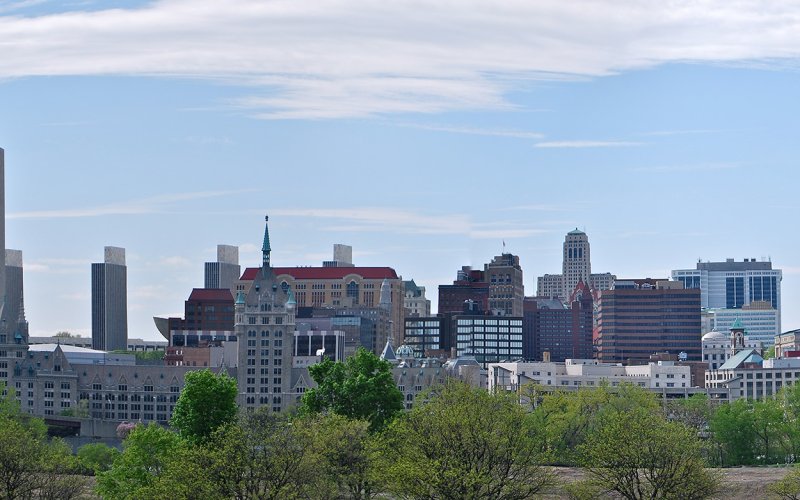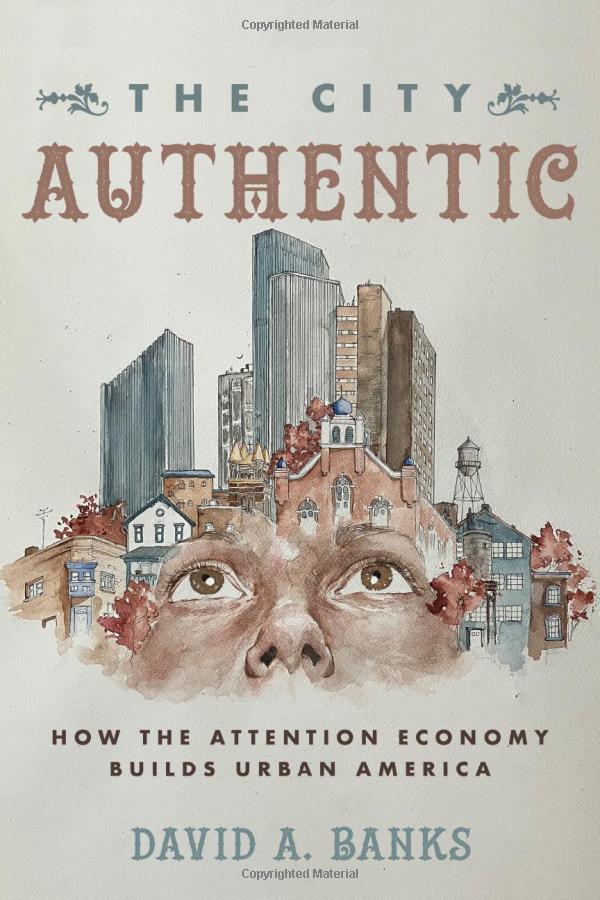The City Authentic: A Q&A with David Banks

By Mike Nolan
ALBANY, N.Y. (April 20, 2023) — More than half of the country's 15 largest cities saw population decreases during the pandemic, as public health restrictions and a shift to remote work promoted many Americans to seek a cheaper cost of living or lifestyle changes in less dense areas.
David Banks, a lecturer in UAlbany’s Department of Geography, Planning, and Sustainability and director of its Globalization Studies program, studies technology, cities and politics. He published a new book this month, "The City Authentic: How the Attention Economy Builds Urban America," that examines how cities in the Capital Region are transforming themselves to appeal to the modern desires for authentic urban living.
We caught up with him to learn more about the book and how small and mid-sized cities, such as those in the Capital Region, have invested in brand strategies to attract new residents.
Your new book looks at how urban life and development is changing in the 21st century. What are some of the key takeaways?
Anyone who studies this field will tell you that cities have always advertised themselves as they competed for investment and new residents, and that is true. St. Petersburg, Florida, was the first American city to hire a press agent and that was in 1918. So, what’s changed?

There are massive wealth inequalities not only within cities but between cities and while big metropolises have no issues attracting investment dollars and new population, smaller ones like what we have in Upstate New York are more likely to position themselves as the quirky thrift store find compared to New York City’s name-brand appeal. At the same time, they can’t be too strange and so they try to find this sweet spot that I call “predictably unique.” This looks like bars and restaurants naming themselves after what used to be in the storefront a hundred years ago. It’s developers foregrounding the exposed brick and original wood floors in industrial loft-apartment conversions. It’s all sorts of shops selling merchandise with the city’s name or the area code on it.
Technology has changed such that even smaller cities can reach further and make more tailored, even sometimes intimate, arguments to specific people to invest, move or visit. Instead of a blunt “Visit Albany!” you now have targeted Instagram ads for people who went to college here in 2007 and now might want a reprieve from high rent in a large city while keeping their work-from-home job.
The upshot of all this actually surprised me. It meant that local governments, economic development organizations, companies and lots of other actors in this field desperately want to consolidate into fewer, bigger entities. Smaller developers want to merge to defend against big city developers looking for value in regions they’d ignored before. Cities themselves want to — and this is a dirty secret no one wanted me to attribute to them — consolidate so they can compete for bigger employers and gain economies of scale that can help them save on administrative costs.
Early in the pandemic, there was a spike in people moving from large cities to smaller ones. Do you expect this trend to continue?
It was a massive spike — all the Capital Region counties saw triple-digit percentage increases in change of address applications from New York City. Hudson and Kingston also received a big influx of new residents. That being said, big cities will exist for as long as our changing climate allows us to maintain complex civilization. Those that moved were disproportionately well-off and so they’re also well-resourced to now return to their condos and co-ops in the city.
If I was a betting man, however, I would put money on a more stable return to small and midsize cities in the coming years as the U.S. puts more emphasis on manufacturing. There’s a reason the so-called Rust Belt took the form that it did: A city of a few hundred thousand that’s within two hours of another is a great geography for manufacturing because it strikes a good balance of cheap-enough land and skilled-enough labor force. I think the pandemic also just gave a lot of people a taste of small city life and even if the overall response was “meh, it isn’t so bad.” That can be enough for a lot of people if the jobs are there.
How have Capital Region cities taken advantage of this population shift?
Everyone jacked up the rent. That’s not a particularly sophisticated way to put it but it’s true. I track and compare the increases in rents and population since 2010 through the pandemic and we added less population than the state-wide average but rent increases were astronomical. Rensselaer County, today, has the highest eviction rate in the state — more than any borough in New York City. There’s good evidence to suggest there’s been a lot of gentrification and not nearly enough efforts to keep people in their homes and help them actually benefit from the influx of cash and customers.
How are social media platforms and influencers being used by smaller cities to attract residents and generate revenue?
Social media and the influencers that predominate it are just part of corporate advertising budgets now, so it shouldn’t be too much of a surprise that cities do it too. Sometimes that means paying an agency to book an influencer who will conspicuously go on vacation in your city. But there’s much more than that.
In Hudson, at the beginning of the pandemic, cookbook author Allison Roman was giving high-profile interviews touting the restaurants in the area. Turns out she’d invested in three restaurants around there. Some luxury apartment complexes even offer partying with a famous tenant as an amenity. Then there are things I call memes of place — these are popular on Twitter and Instagram where people will make memes about what it’s like to live in their city. Around here “Upstatenymemes” on Instagram is a must-follow. Real estate agents actually pay for posts on that account.
What all that shows is just how decentralized the city authentic is. Economic development agencies do their best to coordinate these efforts and while they’re getting better at it, they have a way to go. The Center for Economic Growth, for example, has put a lot of effort into collecting and curating stories from people about what it’s actually like to live around here and try to use that as a repository for information that area recruiters and developers can use to convince people to move and invest here. It’s a solid effort but I also hear from critics that it doesn’t quite ring as wholly authentic.
This is your first published book. What’s next?
I’m not sure. I want to stick with regional economic development in small cities — not enough people are investigating this space even though most Americans live in cities and towns of less than a million people. In general, I feel like anyone in my profession must either write about climate change or explain why they’re not. It’s such a pressing issue it feels irresponsible to not do it. I’m just not totally sure how I can be helpful there yet.




